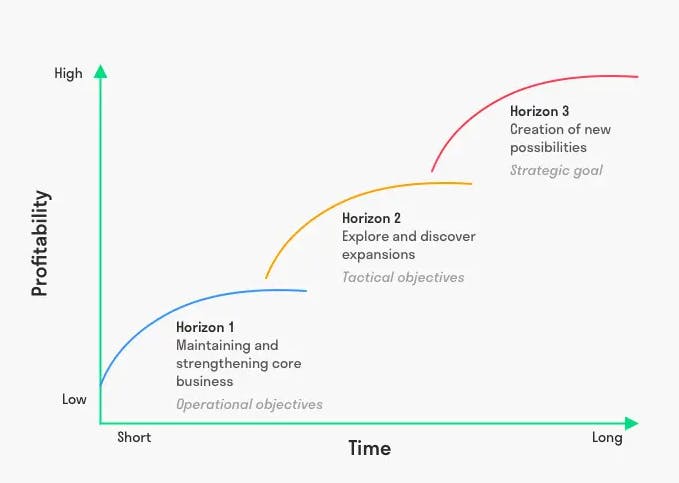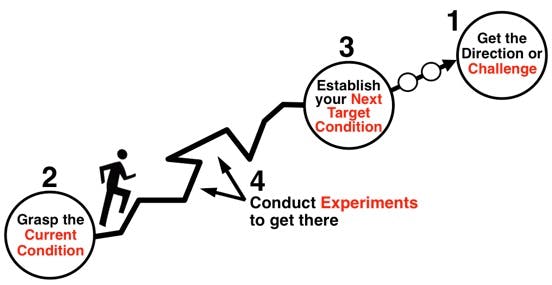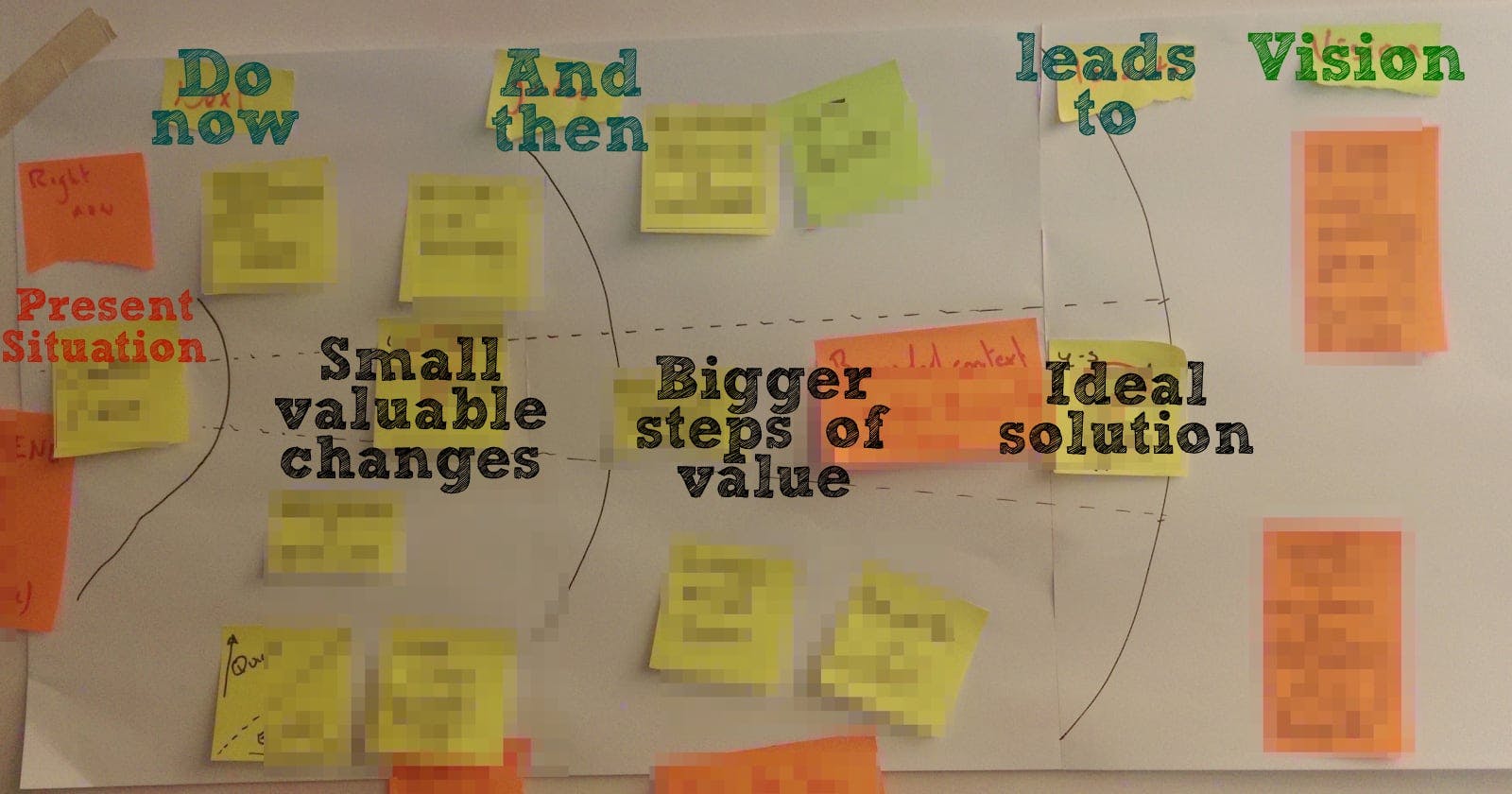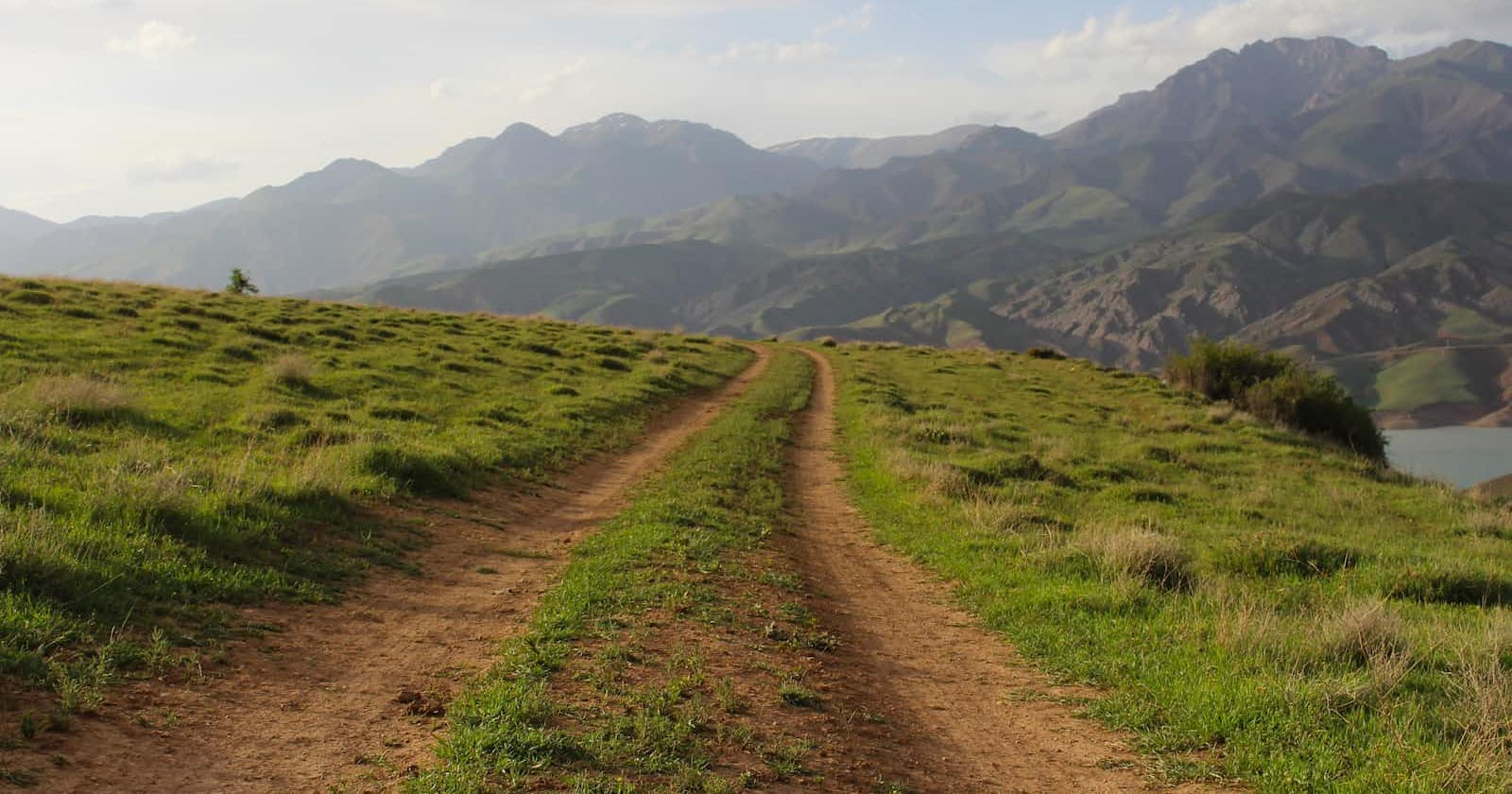
Photo by Sara Mobasheri on Unsplash
Find your way, without a map
Solve complex problems by Horizon Planning
There's a big challenge in modern software and product delivery. We get ambitious missions, goals (or objectives). But we can’t easily get there from where we are.
If we could they would not be ambitious
We do our best. But complexity often drives us to focus on too big a chunk or to make small changes that don't get us going where we need to go.
I use horizon planning to discover what we need to do. The key small steps that are likely to inform and lead toward where we want to be and the more ambitious chunks that can really move the needle.
If you have challenges identifying the right next steps to get towards your goal or want to bring focus to a complex set of moving parts and make some good decisions, read on.
Take an imaginary journey with me
Imagine starting out on a long hike in unknown territory
We know where we are.
Our destination is way over there over the horizon. Several horizons.
We cannot navigate by sight, so we get a map and make a route plan.
And what happens..?
In the doing, our plans change
On the ground, things look different. We learn about our equipment and the terrain as we go. We hit obstacles that we can’t get through. We learn about our initial choices and what the team can do. We may need to find new tools, assistance and options.
Why is this always happening?
When we start we know the least. There is a high degree of volatility and variability in our predictions. We can't know all the answers, because we have not been there.
from http://www.agilenutshell.com/cone_of_uncertainty.
I want to add value as soon as I can - providing solutions to our customers. But I know that discovering the information that will provide the confidence to commit to bigger and better steps is equally important.
Introducing Horizon Planning
Horizon planning is my way of navigating the complex - getting to where I want without knowing exactly where that is or what the path there might look like.
I break up the steps to get to my goal and segment them into three areas
Next: What I can do now: quick wins and information gains.
Future: The big chunks that get me closer to a solid solution
Ideal: The solution, I think I want, to reach my goal
The value of Horizons
By seeing how the first actions line up against the future and ideal state, you can check that what you do now will inform you about what you should do next - making sure it all joins up.
It also means you might find out early that big bet ain't so good, allowing swift adjustments with new key information.
Roots
‘McKinsey's Three Horizons of Growth’ was documented in 1999. Harvard Business Review championed the thing in the 2000s and called The Three Horizons: 'A foundation of innovation strategy.'

For them, it was all about big planning in three phases:
Short-term operation (and innovation) - maximizing value on what you hold.
Extend the business model to new places.
Create new things in response to challenge and change - highly uncertain work.
I've seen it also adopted as a way to encourage growth conversations. Examining the challenges in our present, our aspirations for the future and the innovations we might need to address both.
From the Toyota Production System
The Toyota Production System offers a similar pattern. That getting to a goal requires a series of experiments through an experimental path of targets to where you need to go. Quickly informing on if and when you need to steer your course and change your plan.

I combine the two, allowing me to plan forwards and backwards to gain confidence in what I need to do next.
How does that work?
Ask: what might we do
For my usages, It has operated as simply as presenting a Current State on the left, the Goal on the right, and asking:
what's going to help us get from here and now to the goal?
With these ideas, I lay them out against three horizons:

Ask: what should we do?
I then work through questions like
What's going to have to change for us to get there?
What are we going to need to know?
What feels risky enough, we need to experiment first?
What early work will lead to the bigger steps later?
When we ask these questions, we need to remember that it's okay, well, actually great, to think in steps or stages of delivery, learning and change. With this in mind, I add and remove items from my plan.
I've found it often useful to think of what value and information you'll gain at each step. It can be well worth checking in you're doing both.

Putting the plan into action
This can provide clarity of the work to do next and how it will lead us forward. Work that:
Aligns with the big goals
Solves a problem right now
Provides information on the bigger next steps
As we play this work we will be learning about reality. And so we will need to adjust, and change what we do as we look to ship value and gain information.
Be ready to adapt and seek the next hill
As you operate in horizon 1, it will be informing you about the reality of your predictions about Horizon 2.
You might adust in-flight, allowing your mapping to work as an adapting plan.
As you get close to the end of Horizon 1, if your world still appears too complex: iterate. Take what you know into your current situation and convert all or part of Horizon 2 as your new 'next things to do', de-risked and informed.
Are you ready to be certain about uncertainty?
I use this model in different ways.
I've used it internally, when I own a roadmap, chunking out sections of work that will inform the group about the next phases of the roadmap.
I've used it as an explainer, helping consultants on the ground see the complexity ahead and how we can approach change.
I've also used it as a facilitation tool, allowing a group to discover and clarify the right work and pathways to the goal.
I'd love to hear your solutions to navigating uncertainty.


